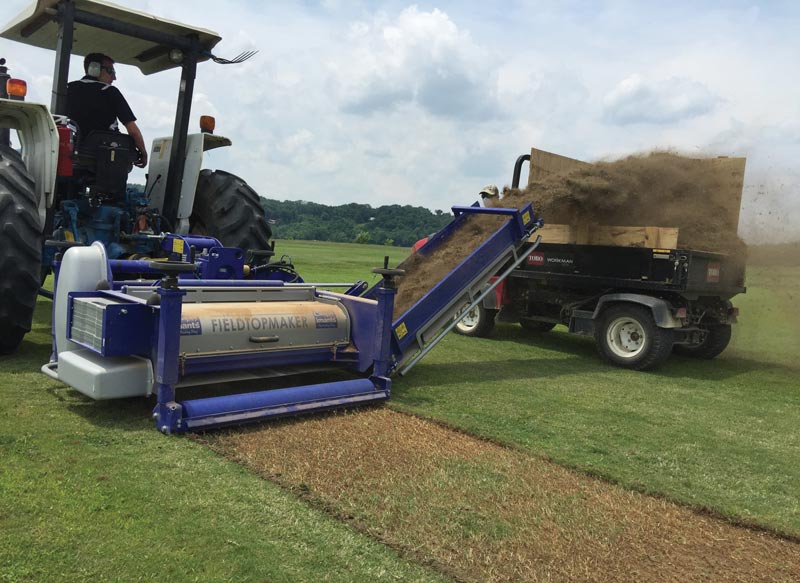
Photo by J.T. Brosnan
Fraze mowing removes aboveground biomass to a depth of 2 inches (5 cm) while allowing turfgrass to re-establish via belowground rhizomes. Because >80% of viable annual bluegrass (Poa annua) seed is in the top 0.4 inch (1 cm) of soil, we hypothesized that fraze mowing might provide effective non-chemical P. annua control, particularly where herbicide resistance has limited chemical control options.
Field research was conducted from 2015 to 2017 at the University of Tennessee-Knoxville on a zoysiagrass (Zoysia japonica ‘Meyer’) fairway naturally infested with P. annua. Turf was fraze-mowed (1-inch [2.5-cm] depth) in June of each year, with debris collected and discarded. Control plots (7.9 × 7.9 feet [2.4 × 2.4 meters]) that were not fraze-mowed were included in each replication for comparison.
Each spring, P. annua infestations were quantified via plant counts. Soil cores that were removed from the center of each plot in spring underwent soil seed bank analysis at Purdue University (West Lafayette, Ind.). Germination assays in this analysis quantified the total number of weed seeds in each core, along with the species, type and life cycle of weeds present.
In field studies, fraze mowing in June significantly reduced P. annua plant counts (26%) the following spring. Our findings suggest that summer fraze mowing can reduce P. annua populations in zoysia turf, but this technique may not provide acceptable control when used alone and should be incorporated into a diversified weed management program.
— J.T. Brosnan, Ph.D., and G.K. Breeden, Ph.D., University of Tennessee-Knoxville; and A.J. Patton, Ph.D., and Q.D. Law, Purdue University, West Lafayette, Ind.
Editor’s note: An earlier version of this summary was published in the 2017 ASA-CSSA-SSSA Meeting Abstracts, ASA, CSSA and SSSA, Madison, Wis.
Teresa Carson is GCM’s science editor.